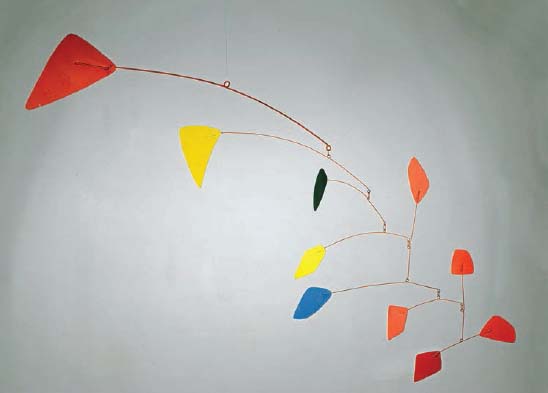The Modern World During and After the World Wars, C. 1914–1960American Art and the Influence of Europe |
Why did Alexander Calder make mobiles? |
American artist Alexander Calder (1898–1976) was interested in sculpture that moved, also known as kinetic sculpture. Trained as an engineer and an artist, Calder was intrigued by Piet Mondrian’s experimentations of color and form, and himself created “moving Mondrians”—free hanging, mobile sculptures engaged in constant physical change. Not only do Calder’s works of art move, but the viewer may move around the art, allowing for ever-changing dynamic viewpoints. Calder’s mobile One of Those (1972) is composed of abstract biomorphic forms that suggest organic, lively objects. Calder made more than mobiles; other sculptural works include the fifty-ton arched-steel Flamingo in Chicago (1973) and the curving, fin-studded Whale II (constructed of wood and steel in 1964 after the 1937 original), housed at the Museum of Modern Art in New York.

One of Those (1972) is an example of the mobile-like, kinetic sculpture of Alexander Calder, who was interested in creating dynamic work that moved through space. (Art courtesy The Bridgeman Library, © 2013 Calder Foundation, New York / Artists Rights Society [ARS], New York.)
